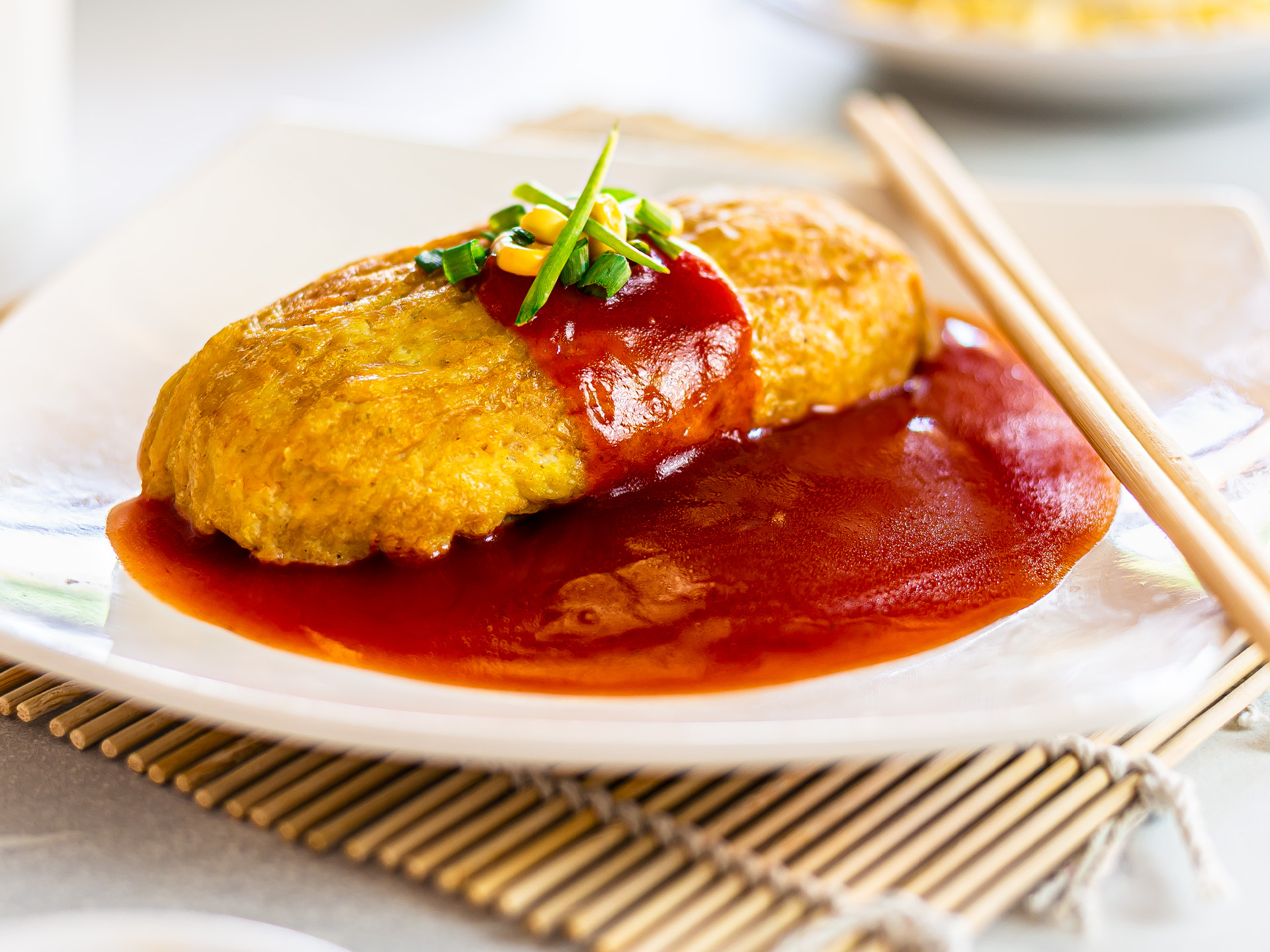Omurice is a beloved Japanese comfort food that consists of ketchup-fried rice tucked inside a thin omelette. We revisited the traditional recipe and turned it vegan using silken tofu instead of eggs. It's super easy and just as delicious!
This delightful rice omelette is a fusion dish of Western and Japanese flavours. In Japan, it belongs to the so-called yoshoku, a category of western-style Japanese food.
It's a staple dish of Japanese home cooking, but it's also often found at Western-style diners in Japan.
The word omurice, or omu-raisu (オムライス), derives from the Japanese pronunciation of the English words omelette and rice. Omelette is spelt omuretsu (オムレツ) and rice raisu (ライス). So omurice is a mash-up of "omu" from omelette and "raisu" from rice.
Omurice consists of Japanese white rice pan-fried with ketchup, soy sauce, chicken, ham or bacon, and vegetables like corn, peas, and carrots.
This tomato-based fried rice is then stuffed into a plain, thin omelette and shaped like a football ball. Finally, the omurice is flipped onto a plate and drizzled with ketchup or ketchup sauce.
Omurice tastes sweet, sour, and savoury. And the combo of fried rice and soft omelette is both filling and comforting. A real delight!
To make omurice vegan, we swapped meat in the fried rice with savoury mushrooms. King oyster, shiitake, and enoki are all great choices.
Then, we paired mushrooms with corn and spring onions, but you can also use other vegetables for the fried rice, following our tips in the FAQ section.
As for the omelette, we replaced eggs with a batter of silken tofu, starch, flour, and curry powder.
Silken tofu is a great egg substitute in vegan recipes, and it's high in proteins. Starch and flour help bind the ingredients, while curry powder gives flavour and colour to the vegan omelette.
Once you learn to make our vegan omelette, you can re-use it in any other recipe that uses eggs! It's so awesome.
Ready to start? Follow our step-by-step omurice recipe below, and you'll be savouring this delicious vegan version of Japanese rice omelette in no time — you'll love it!
What is Japanese omurice?
Also called omuraisu (オムライス), omurice is a Western-influenced Japanese dish. It consists of Japanese sushi rice pan-fried with ketchup, meat, and vegetables, wrapped into a thin omelette, and drizzled with more ketchup sauce.
It's a beloved Japanese comfort food, often home-cooked but also served at Western-style diners.
How do you make omurice vegan?
Omurice is not vegan as it contains chicken and ham in the fried rice and eggs in the omelette. To make it vegan, you can omit the meat in the rice and add mushrooms for a "meaty" and savoury finish.
For the omelette, replace eggs with a batter of silken tofu, starch, and yellow turmeric.
Which are the fried rice ingredients for omurice?
Omurice is usually filled with a pan-fried mix of cooked Japanese sushi rice, chicken or ham, and vegetables, plus soy sauce and ketchup for extra flavour.
You can omit the meat to make the omurice vegan and use more vegetables in the fried rice.
Common vegetables include onions, carrots, peas, corn, and mushrooms. But almost any vegetable will go well with it, which is great for using up leftovers in the fridge!
Which topping sauce do you use for omurice?
Omurice can be served plain with just salt and pepper, but more often, it's drizzled with a squirt of tomato ketchup.
Some omurice recipes also top the rice omelette with sauces like:
A mix of ketchup and soy sauce (the one we used in this recipe);
Tomato sauce;
Demi-glace sauce;
White sauce; you can use vegan bechamel sauce or our vegan hollandaise sauce.
Tonkatsu sauce;
Japenese curry sauce;
Mayonnaise; try our mayo with cashew nuts for a vegan option.
Sriracha sauce or homemade vegan sriracha mayo.
Ingredients
| Japanese Short-grain White Rice (sushi rice) | 260 g |
| Water | 500 mL |
| Vegetable Oil | 2 tbsp |
| Small Onion | 1 |
| Mushrooms (shiitake, king oyster, or enoki) | 80 g |
| Sweet Corn | 80 g |
| Spring Onion Stalks | 3 |
| Ketchup | 130 g |
| Soy Sauce | 4 tbsp |
| Silken Tofu | 380 g |
| Coconut Milk (canned) | 50 mL |
| Starch (corn or tapioca) | 2 tbsp |
| Flour | 4 tbsp |
| Curry Powder | 1/2 tsp |
| Salt | 2 pinch |
Step 1
Let's start by preparing the Japanese fried rice.
Make sure you're using Japanese short-grain white rice, also called sushi rice.
Wash the rice in a pot of cold water, swirling it around and rubbing it with your fingers.
Then, drain it well and repeat two more times or until the water runs clear.
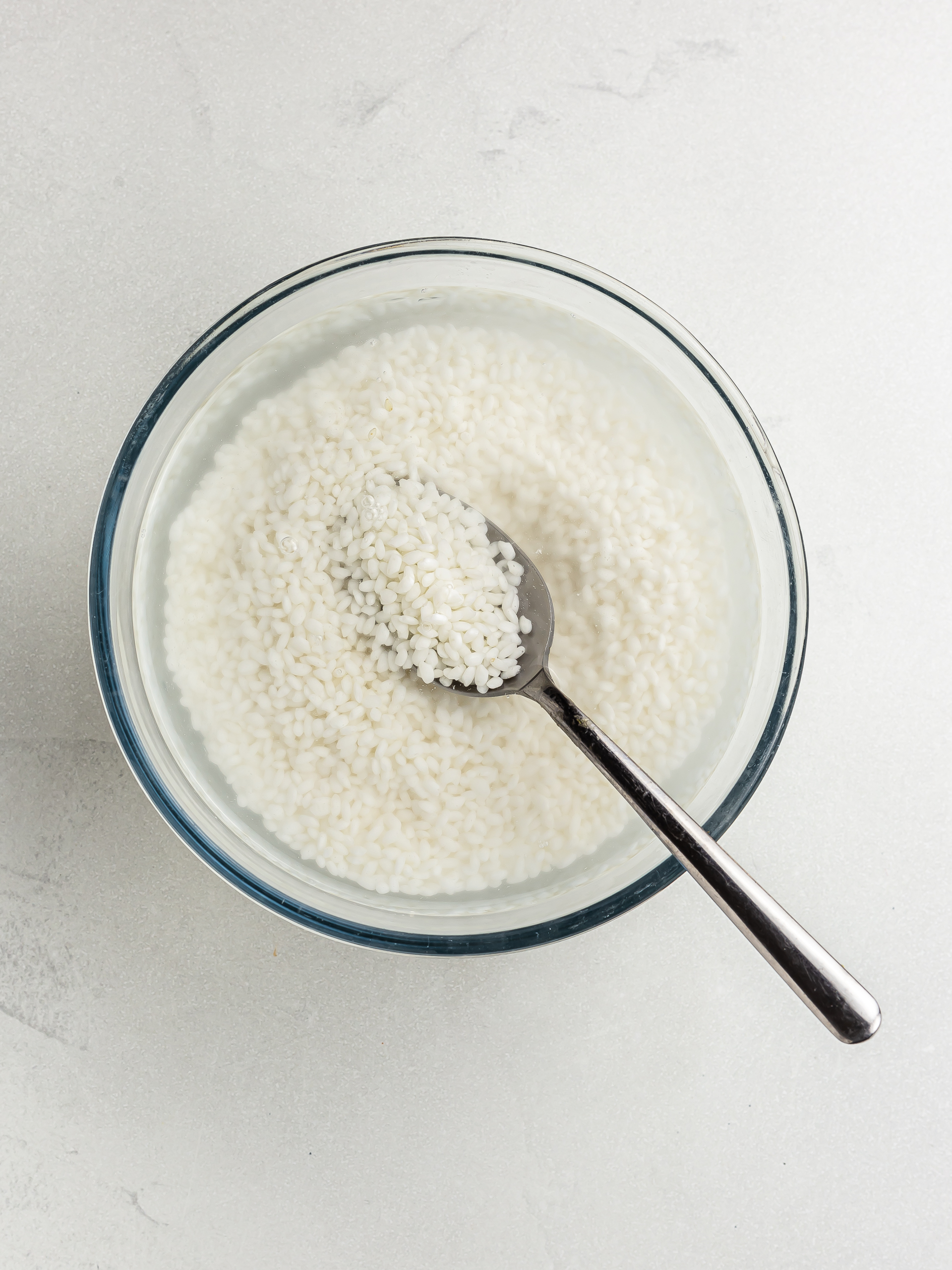
Step 2
You can cook the rice in a rice cooker, following the manufacturer's instructions, or over the hob.
For this second option, add the drained rice to a pot, followed by 350 mL of water and a pinch of salt.
Cover with a tight-fitting lid and bring the water to a boil.
Once boiling, lower the heat to medium-low and simmer the rice for 8-10 minutes.
You must not open the lid or stir rice while it cooks, or it won't cook properly.
All the water should have been absorbed by the end of the cooking time. Now, take a peek, and if there's still some water left in the pot, cook the rice for a few more minutes.
Then, remove the pot from the heat and without removing the lid, let the rice finish cooking in its steam for 10 more minutes.
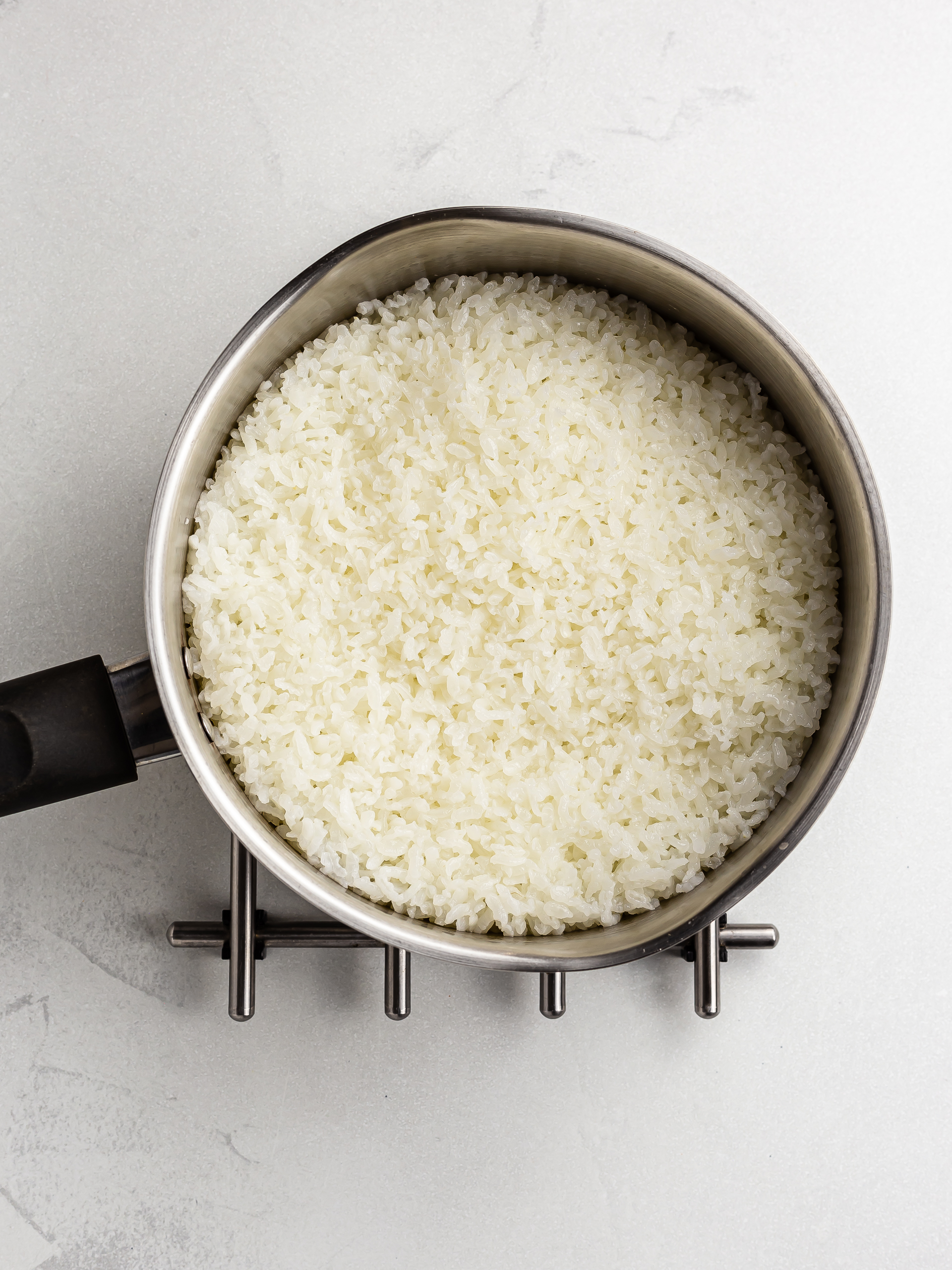
Step 3
Once cooked, transfer the Japanese rice to a moistened tray, shallow pot or bowl.
Use a spatula or a wooden paddle to "slice" the rice vertically and horizontally, separating the chunks rather than mixing them.
This way, you won't damage the rice or make it mushy.
Cover the rice with a damp towel or a lid so it won't get dry, and get ready to stir-fry it.
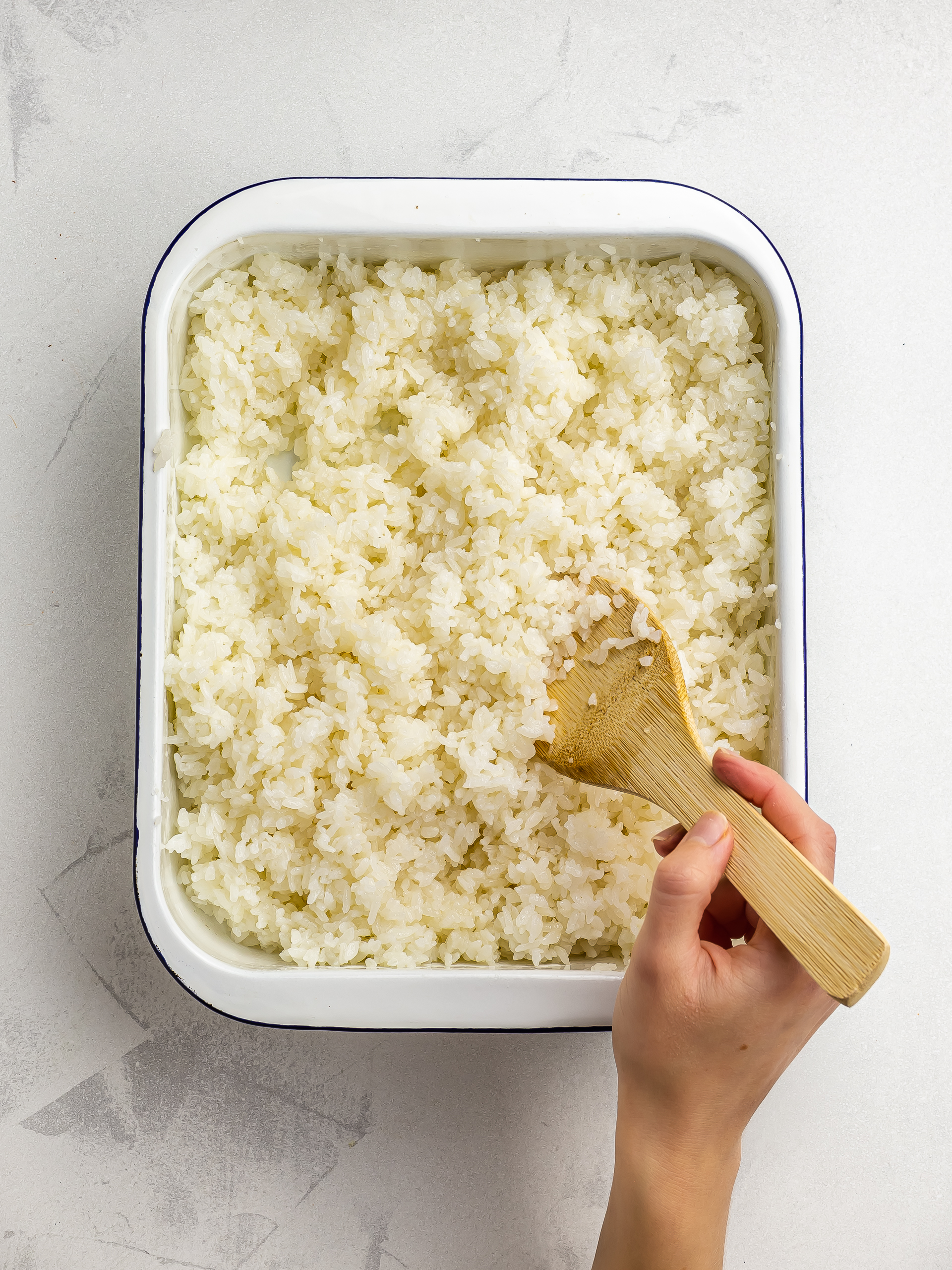
Step 4
Heat 1 tbsp of oil in a skillet, add finely chopped onions, and sizzle them for a few minutes until soft and fragrant.
Then, add chopped mushrooms, sweetcorn, and sliced spring onions.
Season with salt and pepper to taste, and cook the vegetables for 5-8 minutes, stirring occasionally.
Make sure the mushrooms are cooked through and the corn is soft.
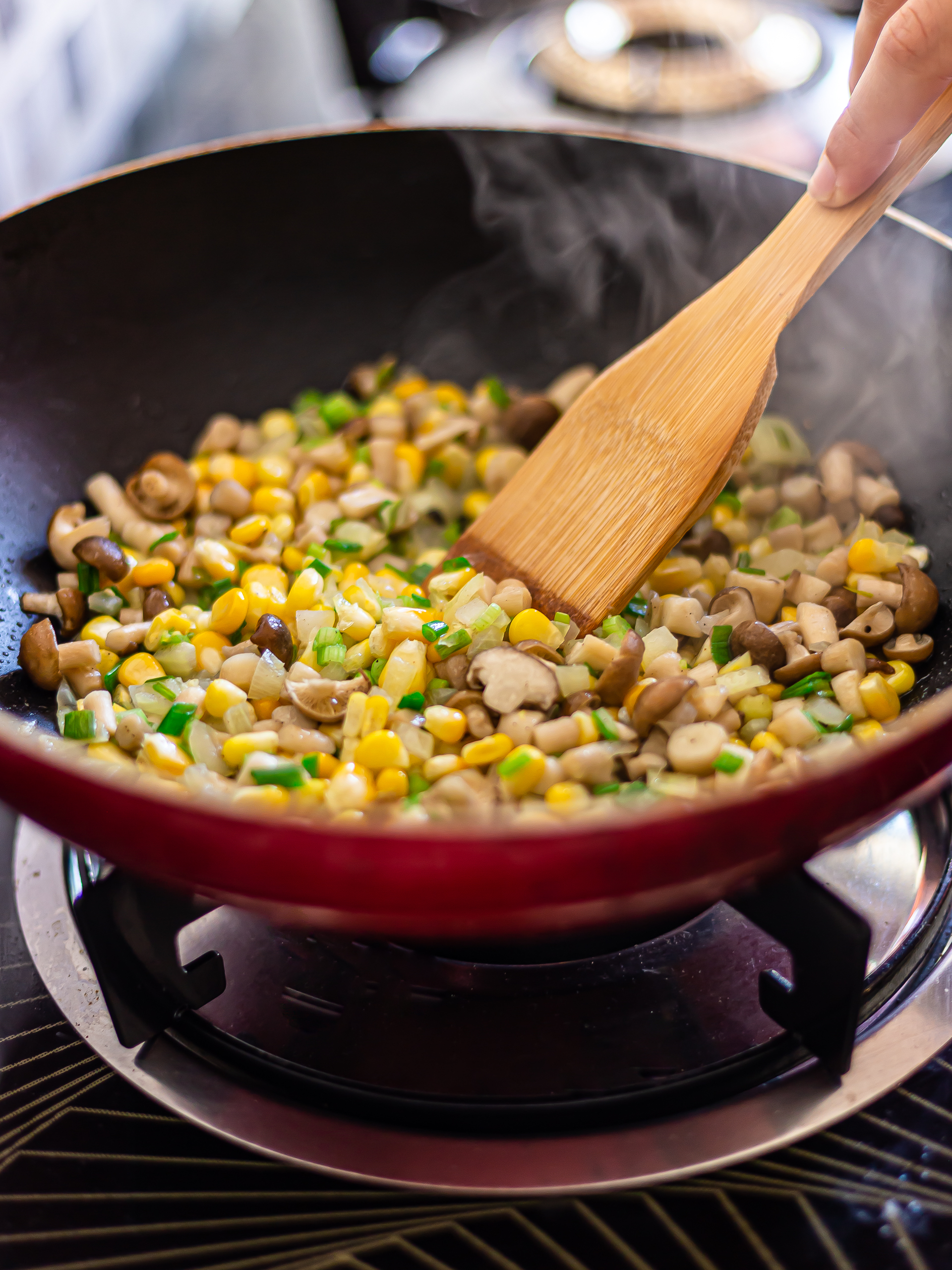
Step 5
Now, add the cooked rice to the skillet, followed by 30 g of ketchup and 1 tbsp of soy sauce.
Stir-fry the rice over high heat for no more than 2 minutes (or it gets mushy) and set it aside.
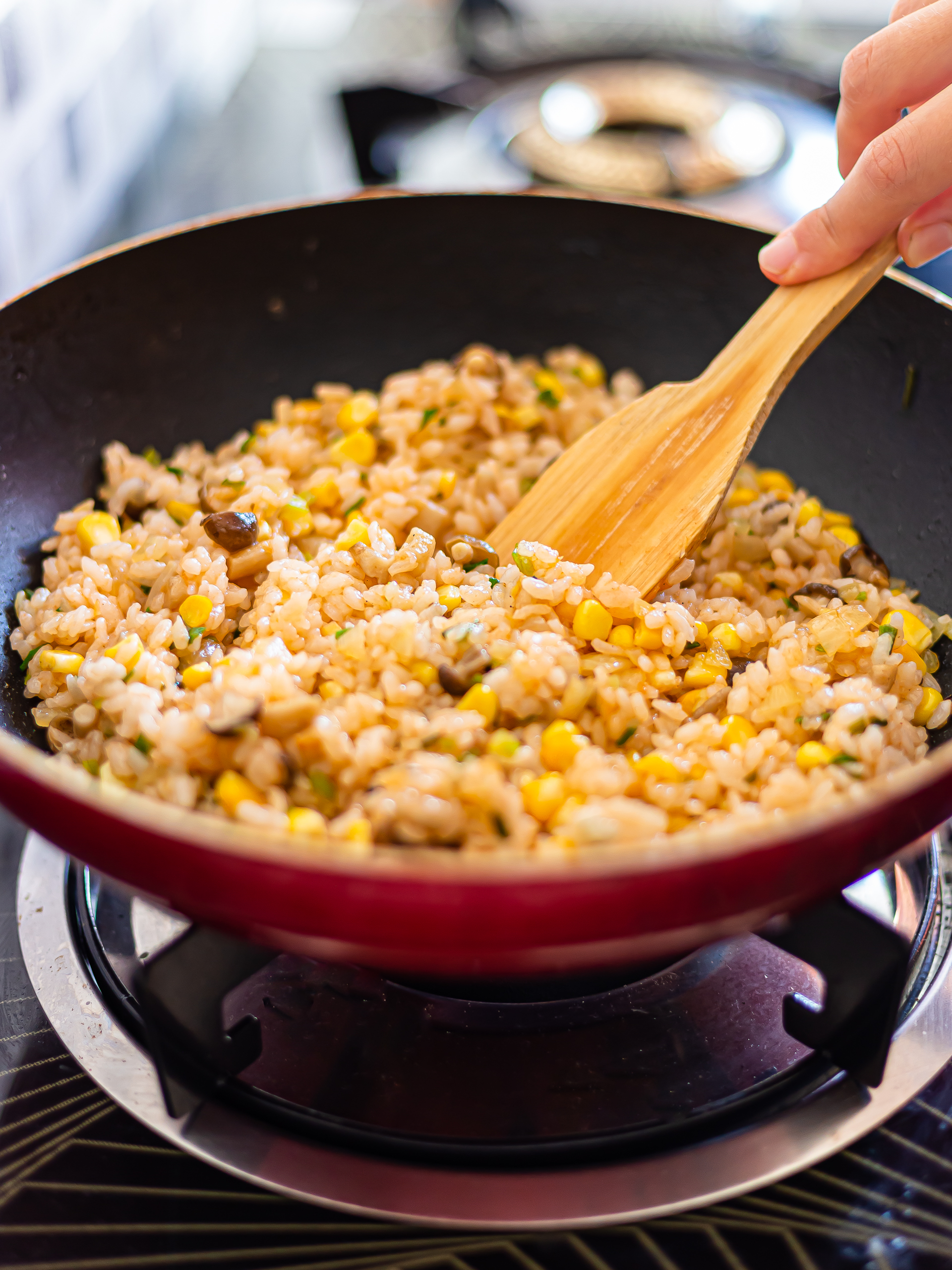
Step 6
Next, let's prepare the vegan omelette batter.
Make sure you're using silken tofu, not firm tofu, or the recipe won't work.
Carefully rinse the silken tofu block to remove the brine water, drain it well, and add it to a blender.
Tip in the coconut milk, 1 tbsp starch, flour, curry powder, salt, and blitz all until smooth.
You should have a silky, pourable, and light yellow batter, slightly thicker than beaten eggs.
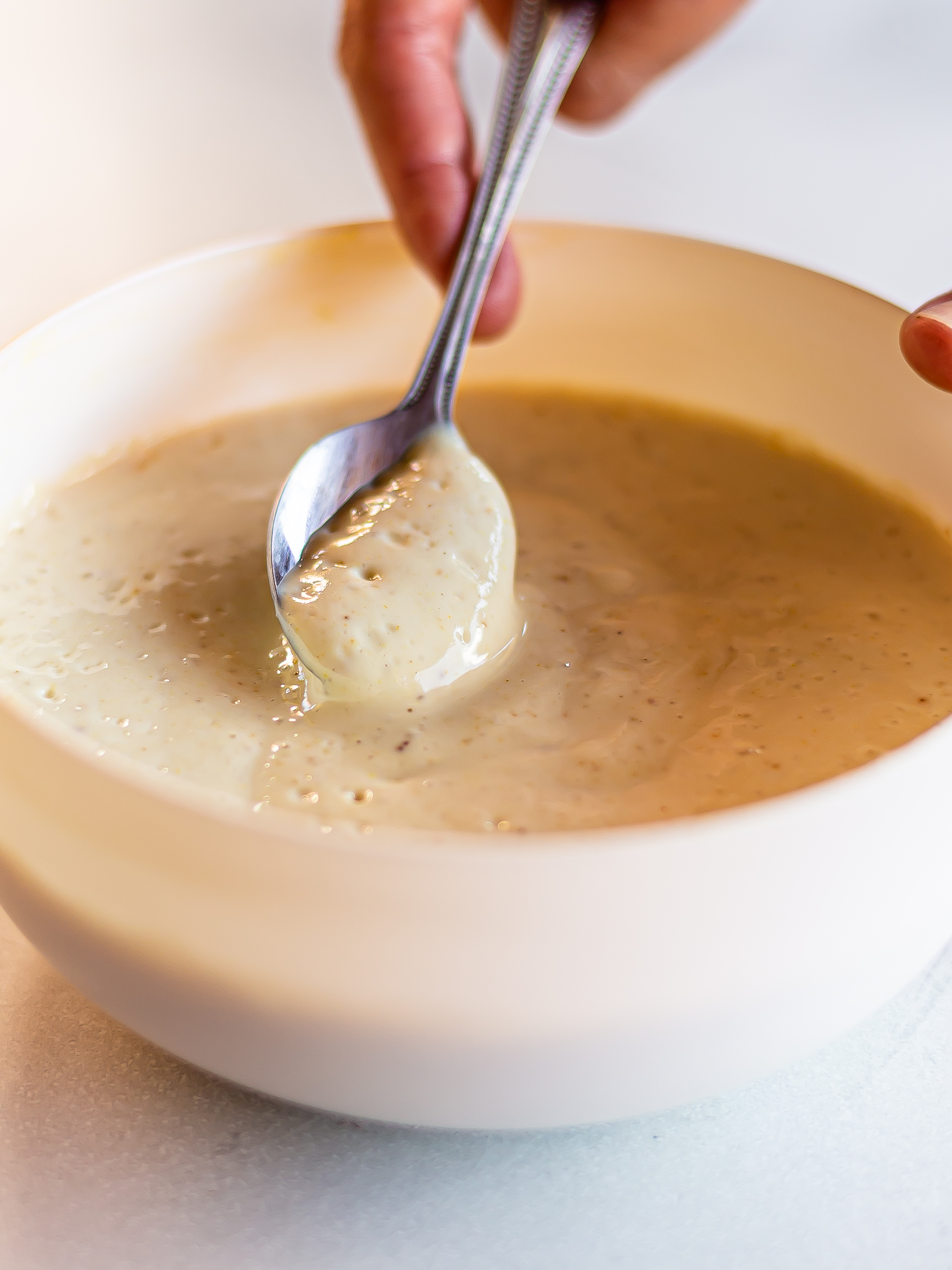
Step 7
To cook one omurice, heat a non-stick skillet over low heat.
Measure about 100ml (1/2 cup) of the silken tofu omelette batter and pour it in.
Then, swirl and tilt the pan to spread the omelette evenly.
Cook it over medium-low heat until you can easily lift the edges of the omelette with a spatula, but the centre is still a little soft.
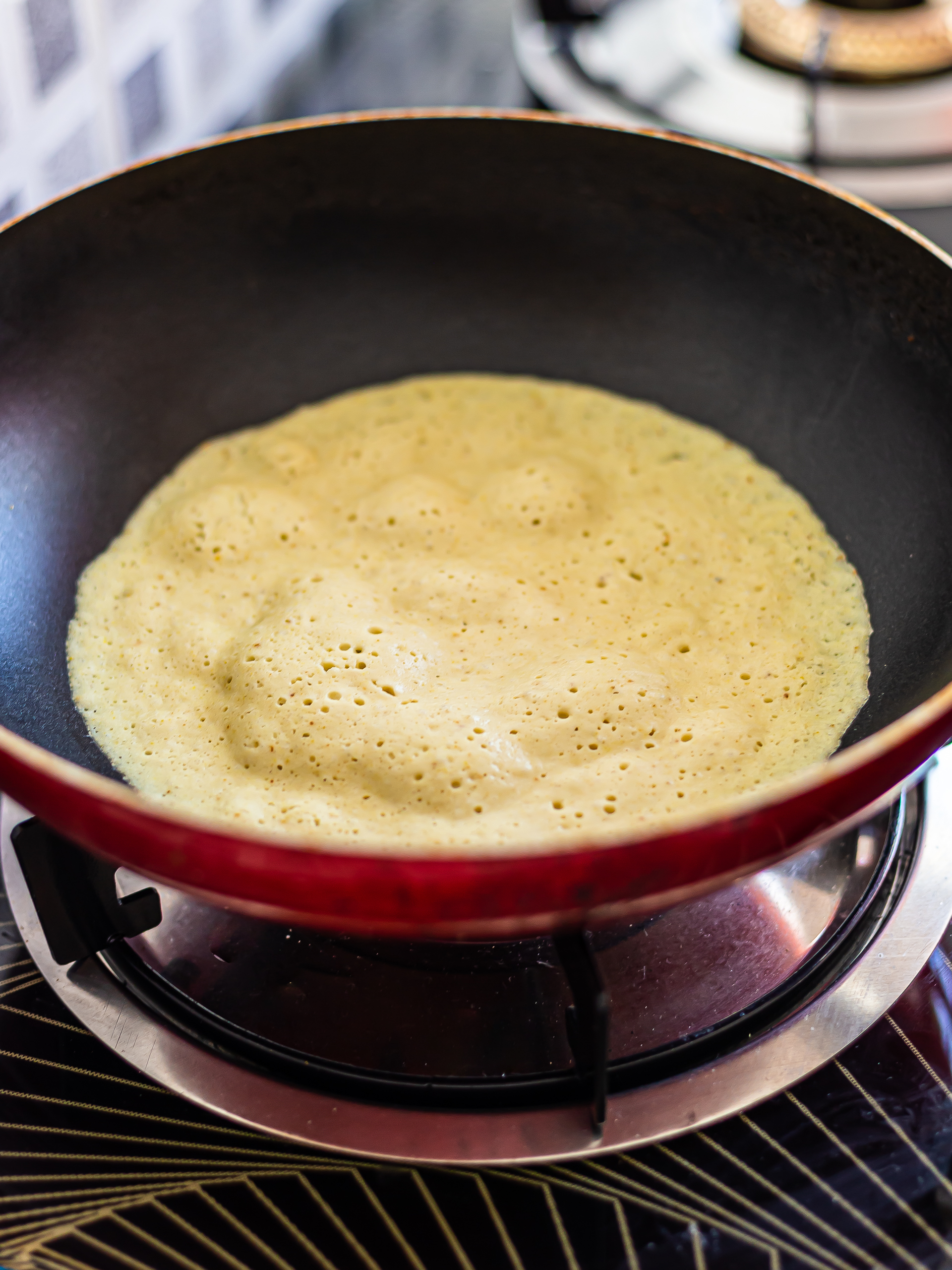
Step 8
Place one serving of the mushroom fried rice in the middle of the tofu omelette (1).
Then, use a spatula to fold both sides of the omelette over the rice to cover it completely (2).
Keep cooking the omurice until the bottom detaches from the skillet and you can easily move the wrapped omelette with a spatula.
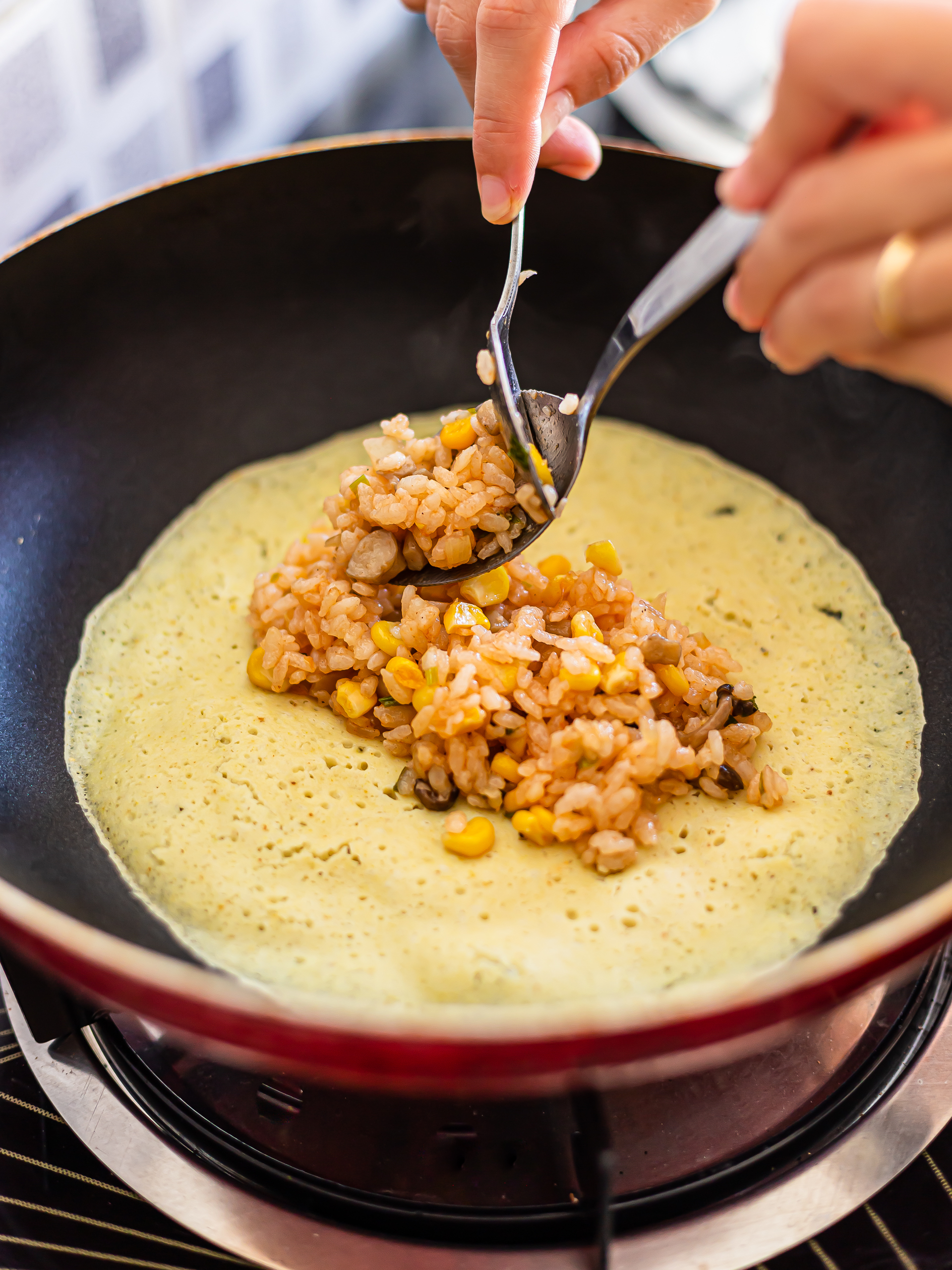
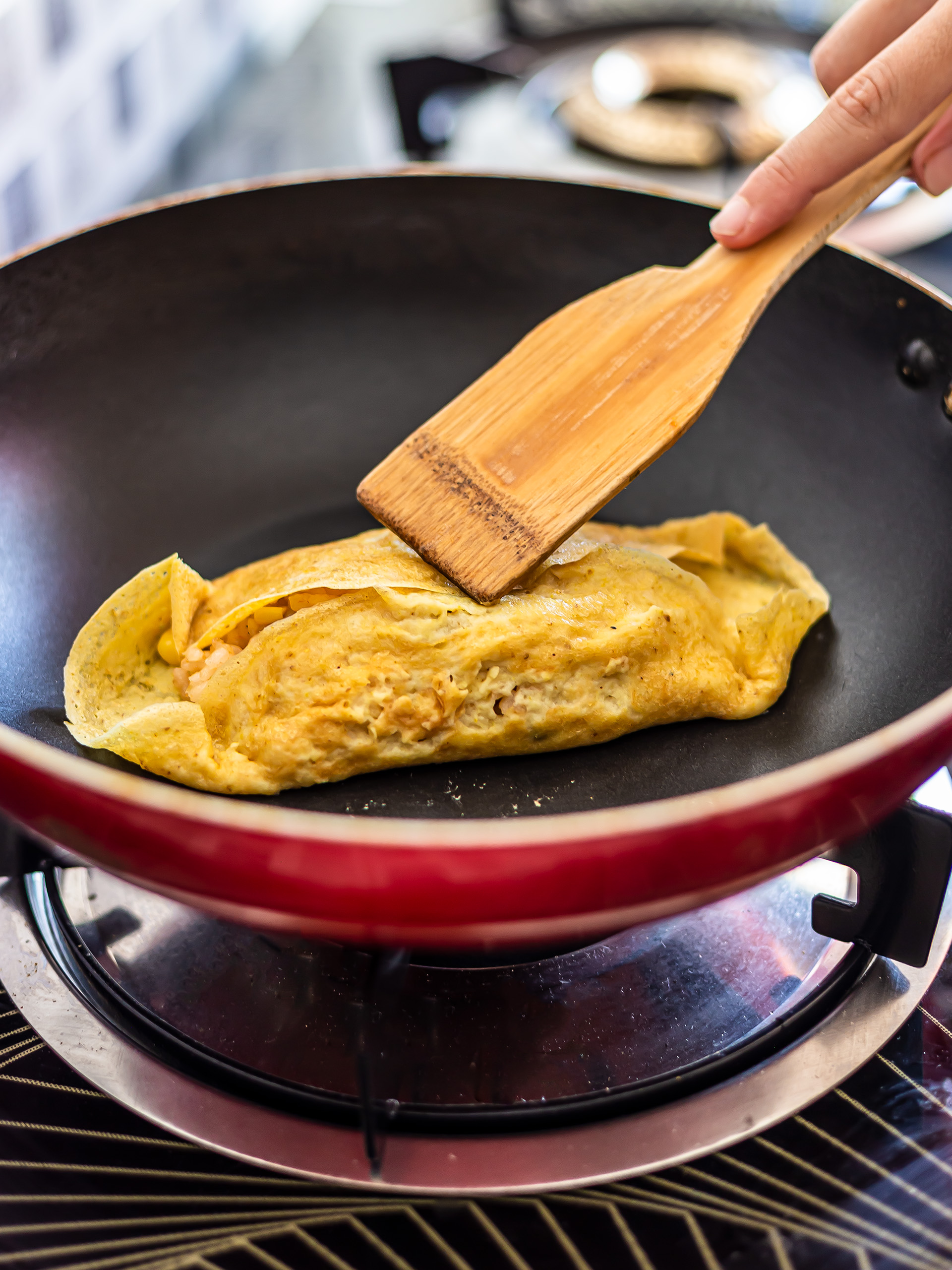
Step 9
Carefully push the vegan omurice to the very edge of the pan with the help of the spatula.
Hold a serving plate in one hand and the pan in the other.
Keeping the plate close and at an angle to the pan, quickly flip the pan to transfer the omurice onto the plate with the seam-side down.
Tuck the sides of the omelette under to give the omurice its characteristic oval, football ball-like shape.
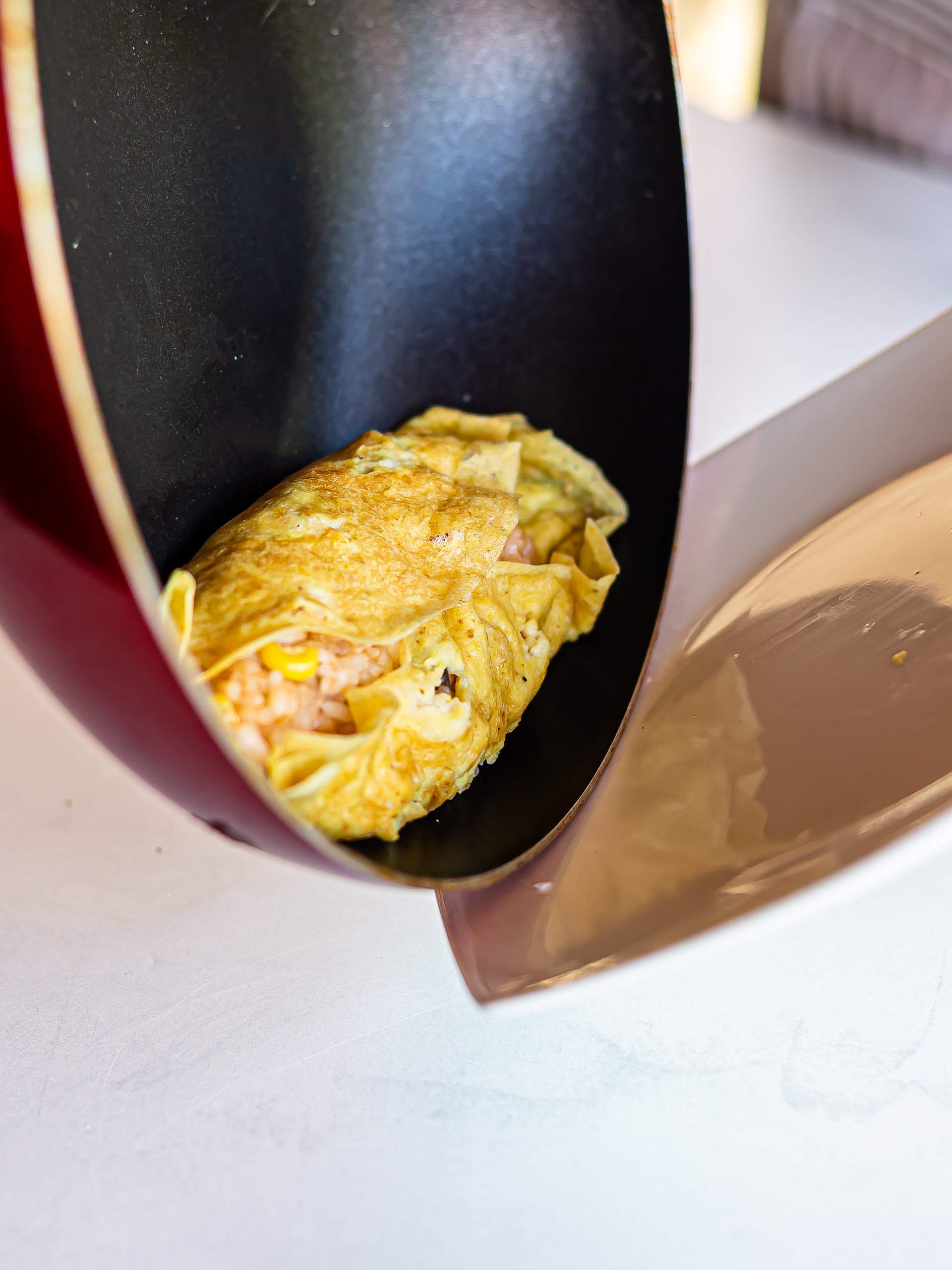
Step 10
Repeat steps 7-9 to prepare the other rice-stuffed omelettes.
Preparing the serving sauce is optional.
You can serve the omurice with a squirt of ketchup, but our sauce is so quick to make and delicious.
Add the remaining 1 tbsp of vegetable oil, 100 g of ketchup, 3 tbsp of soy sauce, 150 mL of water and 1 tbsp of starch to a pot.
Whisk well and bring to a boil over low heat while always stirring.
Once the sauce boil, it will start to thicken.
At this point, cook it for 30 seconds, whisking it to break down any lumps. It should now be thick and glossy.
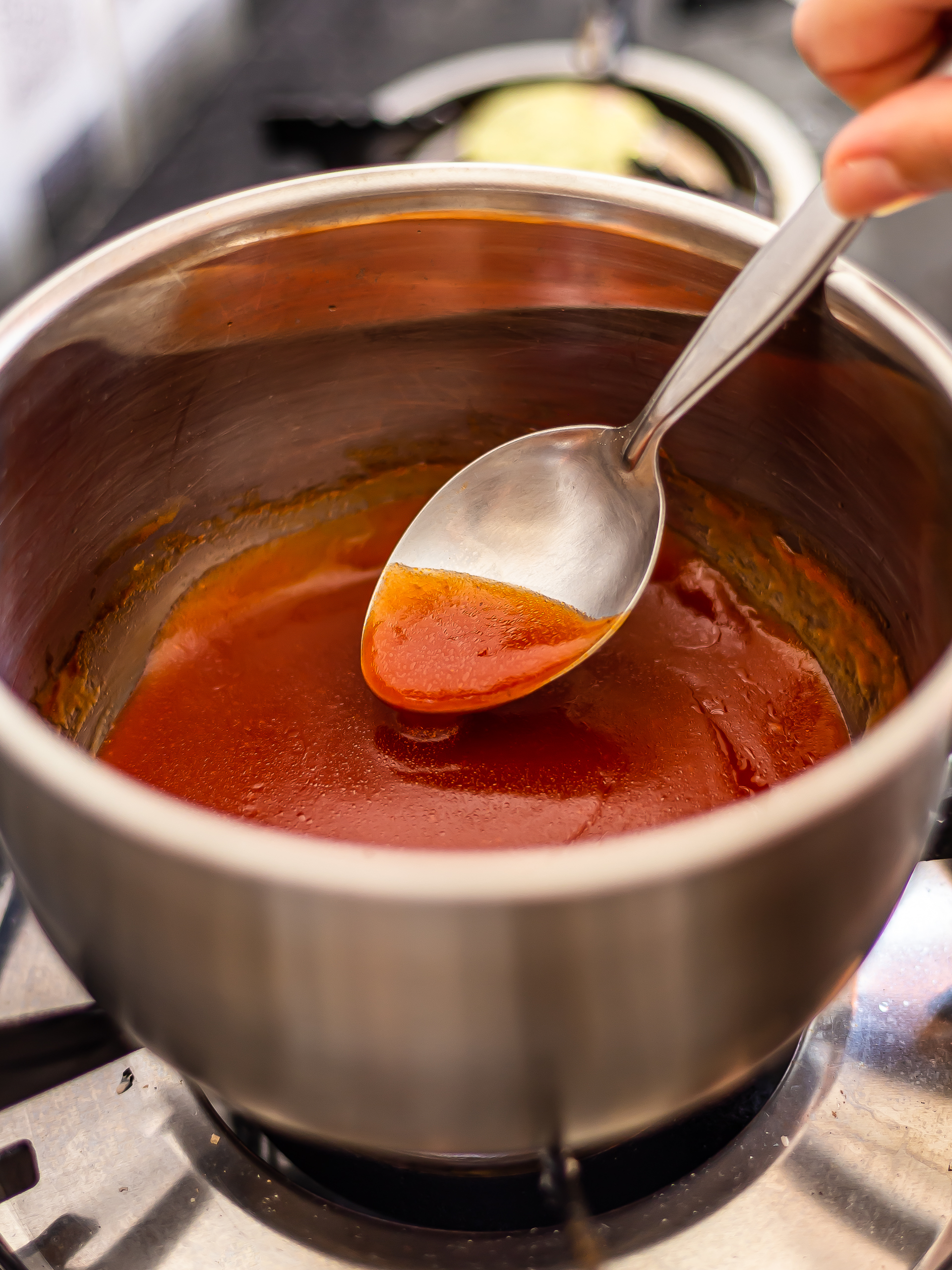
Step 11
You can now garnish the omurice with a drizzle of sauce and a sprinkle of spring onions — and it's ready to serve!
Note:
If you want to garnish the rice omelette with a central strip of sauce as we did, grab three strips of cling film.
Lay one strip lengthwise to cover one half of the omurice. Then, arrange the other two at an angle to leave one central strip of omelette free, as shown in the picture.
Spoon the ketchup sauce over the exposed omelette section (1).
Then, carefully peel the film, pour the remaining sauce around the omurice and top it with sliced spring onions (2).
Enjoy your vegan Japanese rice omelette with a green salad and a few delicious kabocha korokke on the side, as the locals do!
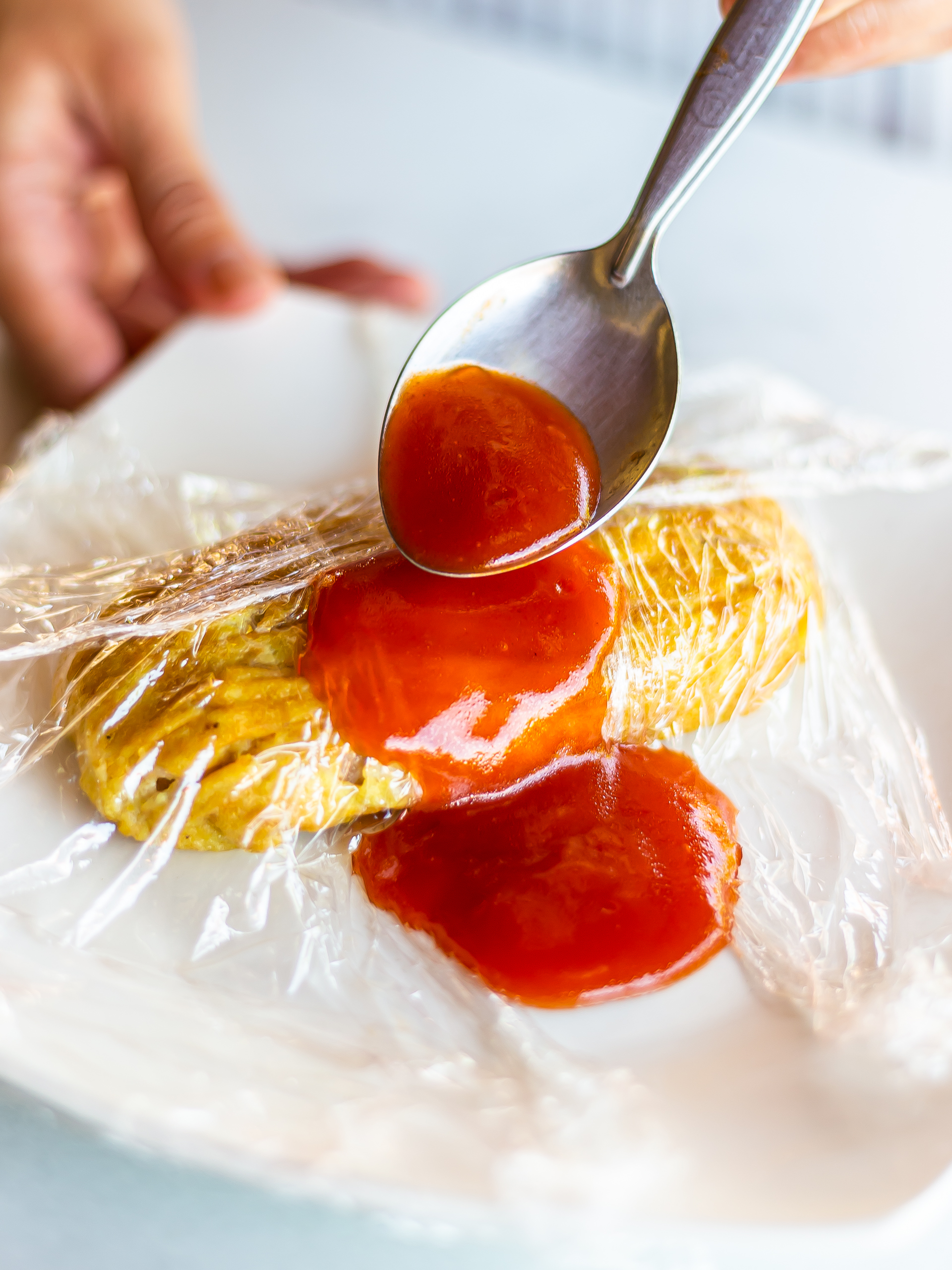
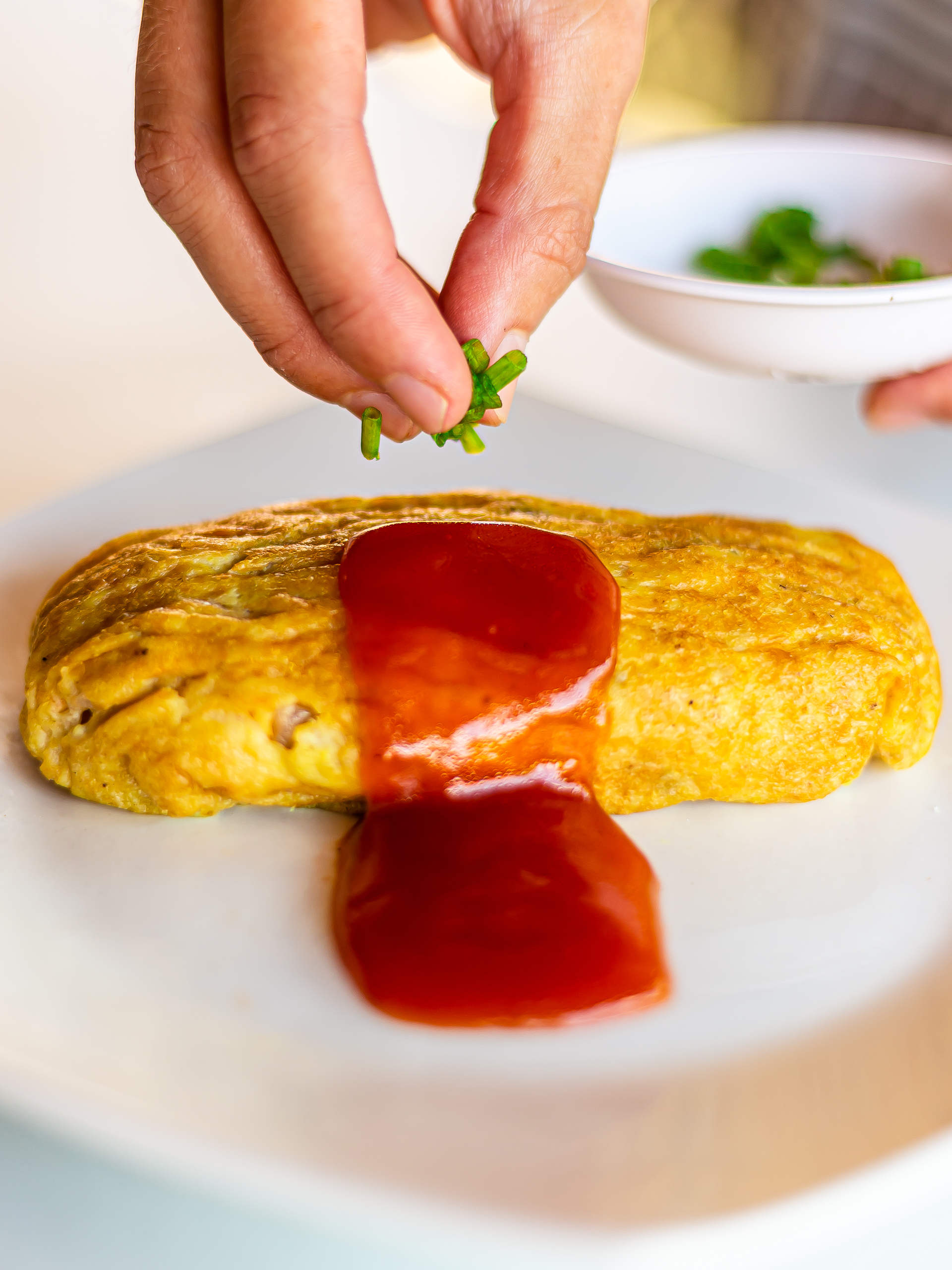
Tips
Try not to overcook the silken tofu omelette. It should be just lightly golden like the classic egg omelette. If the tofu omelette gets too crispy, you won't be able to fold it over the rice without cracking it. So keep a close eye on it while it cooks.
The vegan omelette is quite delicate, so take your time with it as it cooks and you try to wrap it over the rice.
